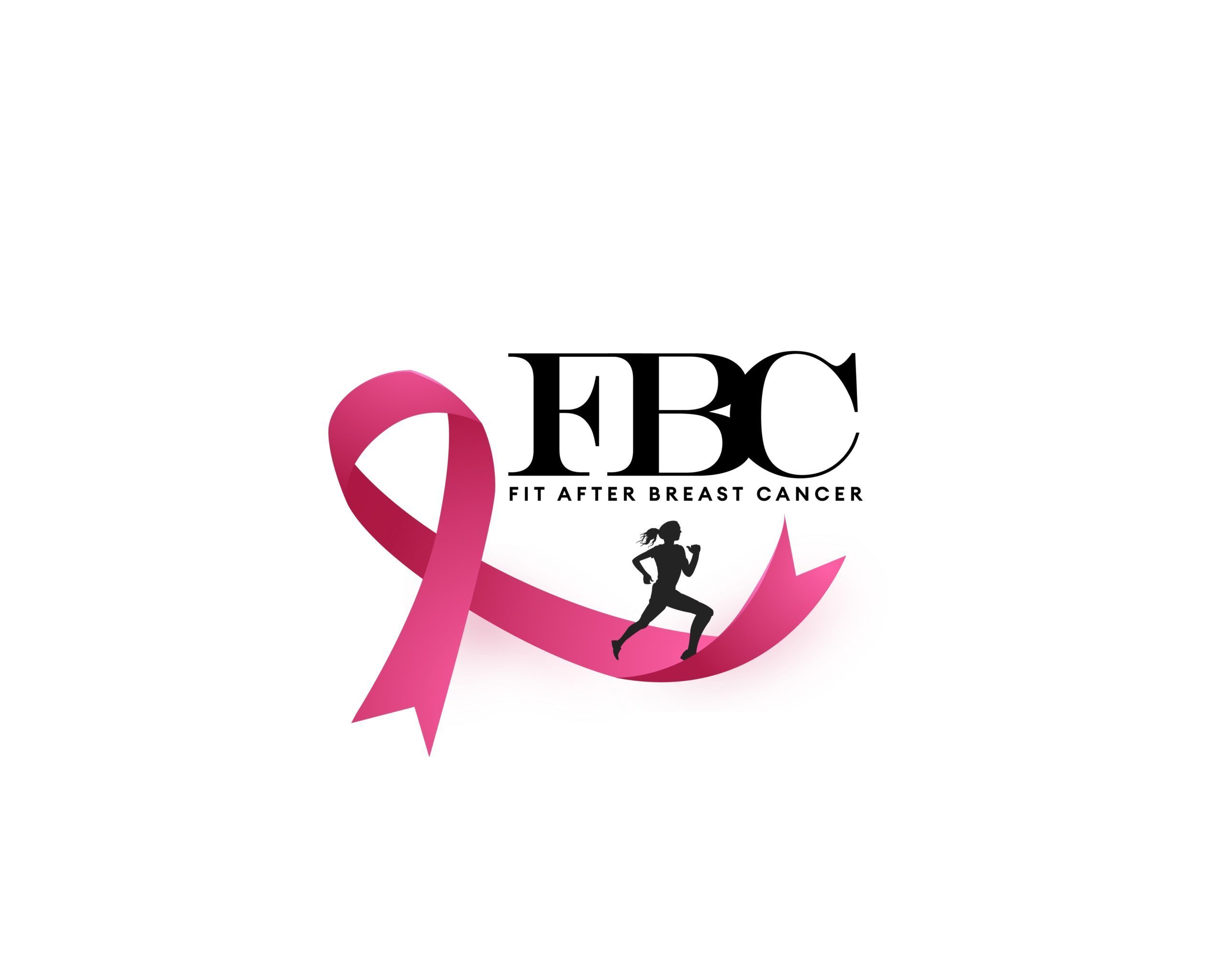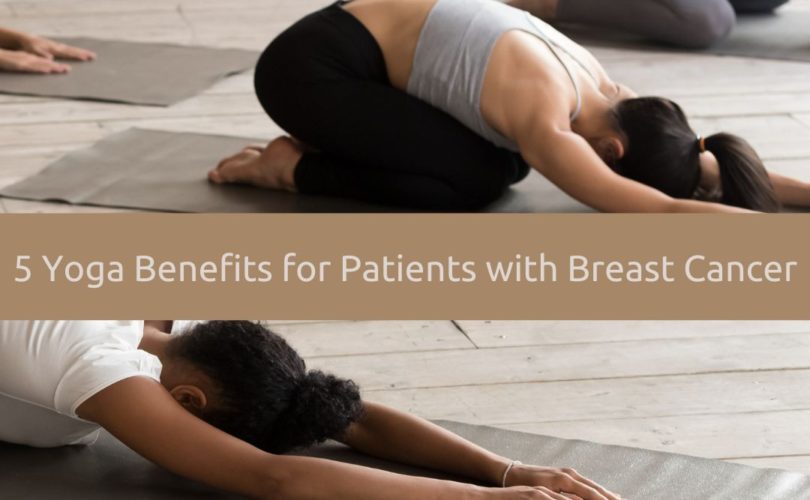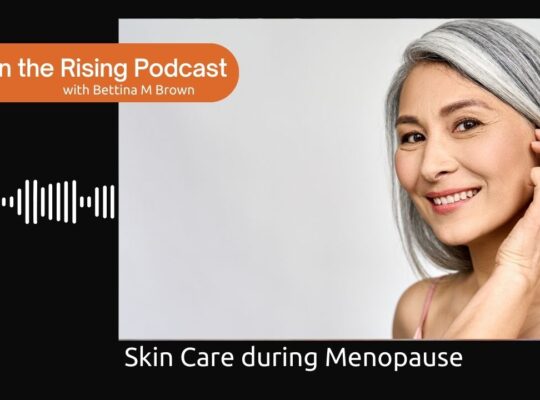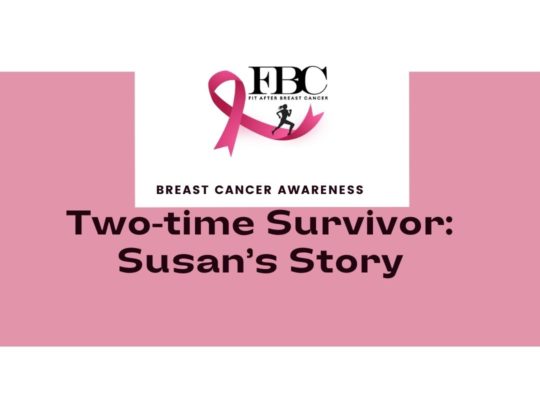Breast cancer, unfortunately, is a common cancer for women worldwide- affecting women in every country. According to the World Health Organization, in 2020, nearly 2.3 million women were diagnosed. Because of awareness and the level of research conducted, it has one of the highest survival rates. However, just surviving isn’t the goal anymore.
Most women look to build a better life, thrive, and have a high overall quality of life. For many women, the importance of being able to thrive after diagnosis and treatment is just as essential as becoming cancer-free. During our conversation on In the Rising Podcast, Corbie Mitleid described her cancer journey as a cancer dance. A dance in which you want to learn the steps, navigate to the music, and safely get off the dance floor with just a few scuffs on your shoes.
The physical health of breast cancer patients is often most emphasized by those in the medical community, by examining pathology results, conducting surgery, and evaluating radiologic studies. However, some of the “dancing scuffs” come in the form of inflammation, decreased mood, and fatigue that feels as if sleep can not touch it. Depression, anxiety, and a low emotional level are the most common symptoms reported by those going through cancer.
As a physical therapist, I have focused on the physical components such as strength and range of motion as well. But, the longer I am a physical therapist, the more I realize that a person’s emotional, spiritual, and psychological health has as much if not more significant effect on well-being and health. The mind-body practice of yoga was often mentioned during my physical therapy sessions with clients who shared their experience of “the dance” with me.
The diagnosis of cancer itself is a huge stress burden, and navigating the myriad of symptoms can be a full-time physical and emotional workout as well. And, it isn’t just the person with the cancer diagnosis that feels this stress, but also their friends and family. There can be added stress when a person is “cancer-free” or “in remission” when friends and family think that the cancer is “over.” But there are still emotional and physical scars in the person, who now feels more isolated while still reeling in the emotional side effects of their cancer journey.
As health professionals, it would be good to have a surface level to a deeper understanding of the different types of supportive environments that a patient/client may benefit from. An Increasing number of cancer centers are embracing new research that demonstrates relaxation techniques that will reduce feelings of anxiety and improve immune response as benefits of yoga. The American Cancer Society has also shared its positive opinion of yoga, even group yoga classes, as an effective regular form of exercise.

Yoga History
Yoga is a ” newer ” practice in the United States but is an ancient practice that has been around for over 5,000 years. In fact, some people believe that the basics of yoga have been present for nearly 10,000 years. The terms in yoga come from Sanskrit, the Indo-European language of India. The word Yoga comes from the word yuj’, meaning to unite- as yoga is used to connect a person’s physical, emotional, and mental components.
Yoga has continued to evolve with time, but the use of yoga as an effective way to bring blood flow to the body, and help increase sleep quality has continued. The beauty of the practice is that yoga teachers have continued to create opportunities for more people to participate in regular yoga practice regardless of their physical limitations. Chair yoga and oncology yoga are two forms that still incorporate the main elements of gentle poses led by yoga instructors that reduce stress and high blood pressure.
What is yoga and what are its benefits?
Yoga focuses on a person’s spiritual and physical activity by emphasizing breathing techniques, mindfulness, and meditation. This focus complements the healing many women seek during or after treatment. Research has also shown that regular yoga can improve overall well-being by increasing positive emotions, reducing anxiety, and enhancing relaxation. Studies are now emerging to show encouraging results based on mind-body therapies, which were previously not included as treatment options.
Breast surgery and radiation can increase tightness in the chest, making daily activities more difficult. One of the more common integrative therapies is yoga, which has been studied and found beneficial for breast cancer survivors. Add yoga to a regular fitness routine, especially when the energy to start exercising at pre-cancer levels isn’t yet.
Going through cancer treatment can be very stressful. Since cancer treatments can take weeks to months to navigate, chronic stress can set in. This is in effect, a high chronic toxicity burden on the body, as high stress leads to decreased immunity and decreased outcomes. For many, the constant sleep disturbance due to the mind racing or the physical effects of treatment can make it very hard to be in the present movement and create a supportive environment.
The human body is actively creating the building blocks to heal during treatment. Having a certified yoga instructor lead individuals through yoga poses will activate their parasympathetic nervous system and reduce the effects of stress. There are varied comments on the effects of yoga- from diminished lower back pain by strengthening muscles, improved posture, and increased flexibility, to increased inner peace and better ability to focus on the present moment.
Inflammation is the enemy of cancer survivors
Inflammation has been getting more attention from clinicians over the past few years. Some of the regular “elderly” diseases, such as osteoporosis, irritable bowel syndrome, and skin appearance and integrity changes, have all been directly connected to increased inflammation in the body. Even the normal aging process has been linked to increased inflammation, with the term “inflammaging.”
Current statistics have shown that people who have gone through standard cancer treatment protocols are 30% less fit than others in the same age bracket.
This means that just the act of going through breast cancer treatment leads a person to be less healthy overall, leading to increased risks of inflammation-based diseases. With less health comes less activity. Inflammation of the body has been researched and found to be lower in active people. Thus, leading to the cycle of continued inflammation that increases the risk of breast cancer.
The takeaway shows that regular physical activity helps reduce inflammation, and reduced inflammation leads to more energy, function, and engagement for breast cancer survivors.
A question remains–what if cancer survivors don’t have enough energy to engage in more cardiovascular activities because of fatigue?
How can yoga help you overcome fatigue after Breast Cancer?
Regular exercise, such as yoga, creates benefits on the level of fatigue. The Society for Integrative Oncology (SIO) publishes its recommendations based on current evidence and subjective reports. Yoga is one area that has been reviewed and is recommended by many professionals to improve quality of life and reduce stress and anxiety.
Research also shows that although most types of yoga are anaerobic, it still has some of the same effects as aerobic exercise. Aerobic means “with air” and is a type of exercise that increases the amount of air needed in the body. Aerobic exercises increase the response of the cardiovascular system. This means that yoga is not in the same category as aerobic exercises (brisk walking, running, and cycling); however, yoga’s breathing and exercise techniques have been shown to reduce heart rate variability and blood pressure.
How yoga Will help overcome fatigue after Breast Cancer?
Regular exercise, such as yoga, creates benefits on the level of fatigue. The Society for Integrative Oncology (SIO) publishes its recommendations based on current evidence and subjective reports. Yoga is one area that has been reviewed and is recommended by many professionals to improve quality of life and reduce stress and anxiety.
Research also shows that although most types of yoga are anaerobic, it still has some of the same effects as aerobic exercise. Aerobic means “with air” and is a type of exercise that increases the amount of air needed in the body. Aerobic exercises increase the response of the cardiovascular system. This means that yoga is not in the same category as aerobic exercises (brisk walking, running, and cycling); however, yoga’s breathing and exercise techniques have been shown to reduce heart rate variability and blood pressure.
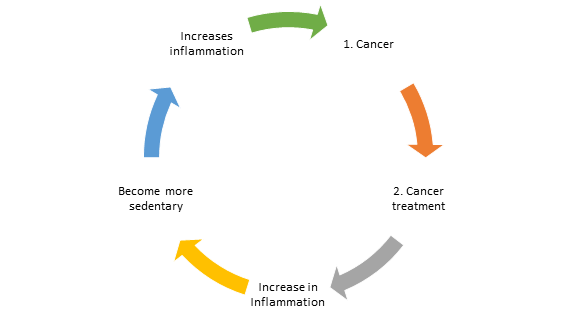
How does yoga address fatigue?
In a 2014 article by the American Society of Clinical Oncology, a 12-week study was completed with 200 participants. Each person was given a questionnaire and fasting blood samples were taken.
The people chosen for the study were between 27-76 years old and completed cancer treatment within the last three years, plus were at least two months post-radiation. The 200 participants were separated into two groups. One group met for two 90-minute yoga sessions per week and the other group did not. When women finished the questionnaire reflecting their fatigue right after yoga, the women who did the yoga did not rate any differently than women who did not exercise. However, three months later, those women who completed two 90-minute sessions had much-reduced reported fatigue levels.
The blood samples of those who completed the yoga also showed a change three months later. The researchers also found that just participating in yoga activities, even for 10 minutes per day, had reduced inflammatory markers widely seen in people with a higher risk of breast cancer recurrence.
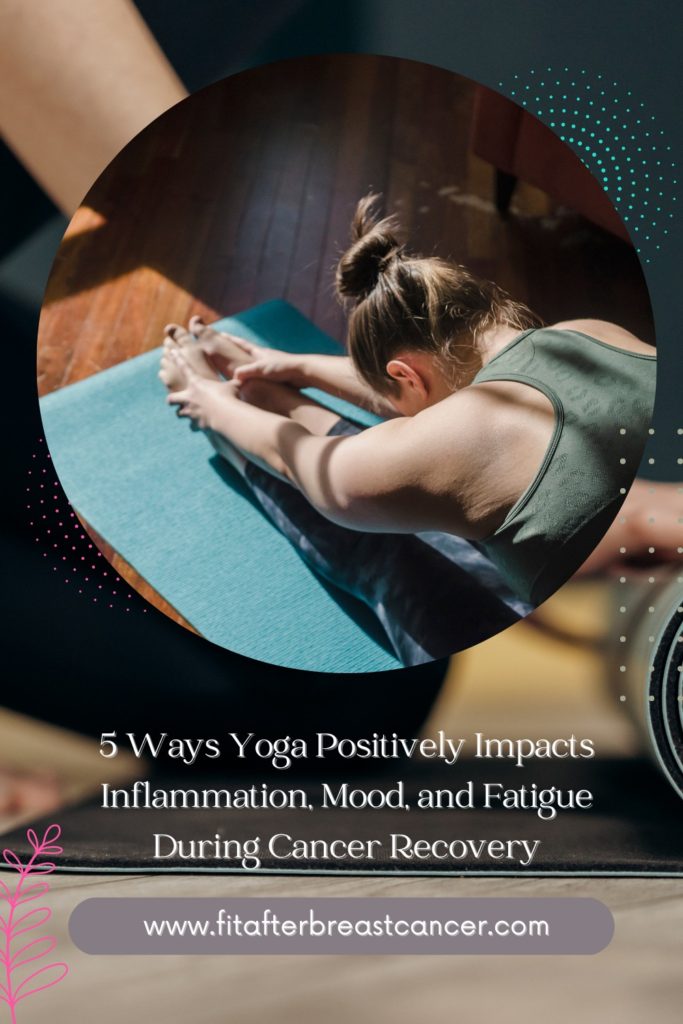
Takeaway on yoga benefits for those who completed breast cancer treatment:
- Consistent physical activity or body movement helps increase a positive mood
- Consistent movement found in yoga exercises helps increase vitality and energy. Studies have some less inflammation in those who participate in an activity such as yoga regularly.
- Yoga has been shown to reduce inflammation thereby reducing the risk of breast cancer recurrence
- Restorative yoga helps improve the immune system
- Consistent yoga practices can reduce fatigue
In Good Health,

References:
Kiecolt-Glaser JK, Bennett JM, Andridge R, Peng J, Shapiro CL, Malarkey WB, Emery CF, Layman R, Mrozek EE, Glaser R. Yoga’s impact on inflammation, mood, and fatigue in breast cancer survivors: a randomized controlled trial. J Clin Oncol. 2014 Apr 1;32(10):1040-9. doi: 10.1200/JCO.2013.51.8860. Epub 2014 Jan 27. PMID: 24470004; PMCID: PMC3965259.
Cramer, H., Lauche, R., Klose, P., Lange, S., Langhorst, J., & Dobos, G. J. (2017). Yoga for improving health-related quality of life, mental health and cancer-related symptoms in women diagnosed with breast cancer. The Cochrane database of systematic reviews, 1(1), CD010802. https://doi.org/10.1002/14651858.CD010802.pub2
Dieli-Conwright CM, Lee K, Kiwata JL. Reducing the Risk of Breast Cancer Recurrence: an Evaluation of the Effects and Mechanisms of Diet and Exercise. Curr Breast Cancer Rep. 2016;8(3):139-150. doi: 10.1007/s12609-016-0218-3. Epub 2016 Jun 27. PMID: 27909546; PMCID: PMC5112289.
Rao RM, Amritanshu R, Vinutha HT, Vaishnaruby S, Deepashree S, Megha M, Geetha R, Ajaikumar BS. Role of Yoga in Cancer Patients: Expectations, Benefits, and Risks: A Review. Indian J Palliat Care. 2017 Jul-Sep;23(3):225-230. doi: 10.4103/IJPC.IJPC_107_17. PMID: 28827923; PMCID: PMC5545945.
Greenlee, H., DuPont-Reyes, M. J., Balneaves, L. G., Carlson, L. E., Cohen, M. R., Deng, G., Johnson, J. A., Mumber, M., Seely, D., Zick, S. M., Boyce, L. M., & Tripathy, D. (2017). Clinical practice guidelines on the evidence-based use of integrative therapies during and after breast cancer treatment. CA: a cancer journal for clinicians, 67(3), 194–232. https://doi.org/10.3322/caac.21397
Nivethitha L, Mooventhan A, Manjunath NK. Effects of Various Prāṇāyāma on Cardiovascular and Autonomic Variables. Anc Sci Life. 2016 Oct-Dec;36(2):72-77. doi: 10.4103/asl.ASL_178_16. PMID: 28446827; PMCID: PMC5382821.
